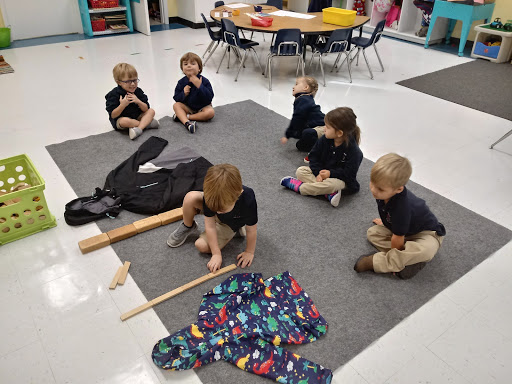Last week Luna’s mom and dad volunteered to take the Pre-K3 classes for a nature walk on our school trails. Luna’s dad, Clint, is the Southern Arkansas Project Manager for The Nature Conservancy's Arkansas office. Since 2005, Clint's focus has been on habitat restoration for the entire southern portion of Arkansas, working with both private and public land partners to ensure lands and waters are protected and restored. We were fortunate to have Clint help educate our boys and girls about nature. During our nature walk Clint talked to us about why leaves fall off of trees, pine cones, fungus, and algae. He discussed why trees get sick, what animals live in trees, and showed us what deciduous and evergreen trees looked like. What an adventure!
A fun game we played was called Feely Box. I collected several items from trees and placed them in a box so that the children couldn’t see them. Each boy and girl had a turn to reach inside the box, feel the item, and describe it. Everyone tried guessing what was in the box. Then we passed the item around for the children to examine. After discussing the five senses, we tried describing the item by the way it felt. As they used their senses to explore things, they learned about shapes, colors, textures, weight, temperature, and how things move and change. As teachers talk with children about the properties of objects and materials, children develop vocabulary and important background knowledge.
On one of our nature walks the boys and girls collected sticks to make letters. Each child picked one letter in their name that used big and little lines. They had to count the lines to see how many big or little sticks they would need. Knowledge of letters is an important component of literacy. The children are learning that written words are composed of letters that represent sounds.



























